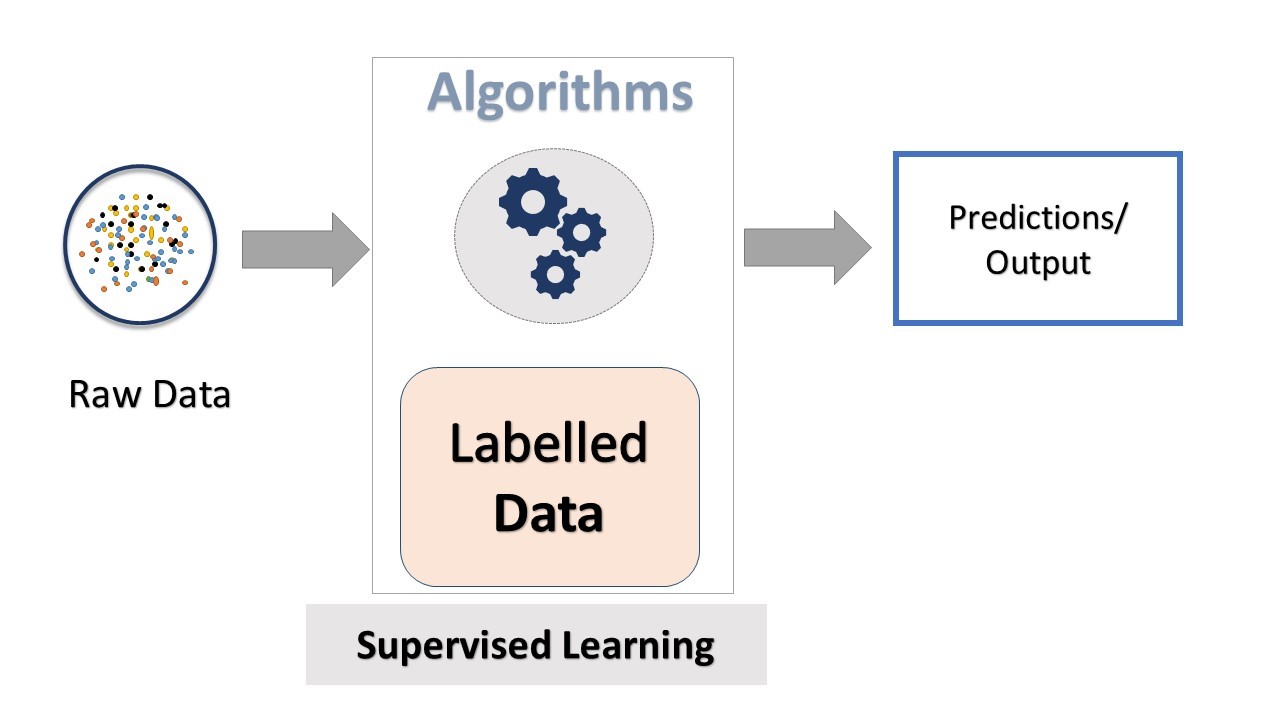Introduction
Machine learning has become one of the trending technologies due to its hidden potential of limitless transformations within various industries.
It is used within lots of disciplines such as self-driving automobiles (Tesla, Apple cars, Google’s self-driving cars), e-commerce websites apps (Amazon, Flipkart, Myntra), Face detection (smart homes), entertainment websites (OTT platforms- Netflix, HBO and Amazon Prime Video), and other applications of machine learning are used within various industries through customers and businesses.
Supervised Machine Learning is like the second step towards machine learning.
What is Supervised Machine Learning?
Supervised learning is the most primitive or common subcategory of machine learning, and there is no doubt that most of the practitioners start their machine learning journey with the supervised learning. In brief, it is the first step towards machine learning. In supervised learning, using labelled data (dataset has features or labels), supervised machine learning algorithms predict the classification of other unlabeled data.

Working of Supervised Machine Learning
While training of a supervised machine learning algorithm, the system encounters massive amount of data to predict some output at each specific value of inputs.
In layman terms, it tries to find a pattern or relation with the input and output values.
After training, the trained machine learning algorithm is verified with the testing dataset, which verifies the efficiency of result or measure the accuracy of the algorithm.
Steps Involved in Supervised Machine Learning
- Step 1: Determining the datatype of datasets.
- Step 2: Collecting the labelled datasets.
- Step 3: Splitting-up the collected dataset into training dataset, testing dataset, and validation dataset.
- Step 4: Determining the input variables for training datasets, and these input variables should have enough information, so that the built model can accurately predict the targeted attributes or output.
- Step 5: Determining the suitable machine learning prediction model or algorithm such as Linear regression, polynomial regression, or support vector machine.
- Step 6: Machine learning model execution on training datasets with validation sets as control parameters, which are the subset of collected datasets.
- Step 7: Introduction of Evaluation metrices, which tells us about the accuracy of machine learning model by providing the output values of testing dataset. If the model ‘output values are predicted correctly then the model is declared as an accurate model.
Types of Supervised Machine Learning
types of supervised learning algorithms:

Regression Algorithms
Regression algorithms are predictive statistical models, where the model tries to find out the relationship between dependent (functions) and independent variables.
In regression algorithms, the targeted variable (estimating values) is a numeric variable, for example sales and income of an entity, house prices and test scores of the students.
Types of Regression Analysis
- Linear Regression
- Polynomial Regression
- Multiple Regression
- Lasso Regression
- Ridge Regression
- Elastic-Net Regression
Classification Algorithms
Classification algorithms are the supervised machine learning techniques, which classifies the datasets into various classes based on certain characteristics. Basically, these are the task that identifies the class to which instance it belongs. In classification algorithms, the targeted variable is a categorial variable. It is used in fraud detection, face detection and sentiment analysis.
Here, some of the well-known and frequent Classification Algorithms are given:
- Logistic Regression
- Naïve Bayes
- Linear Discriminant Analysis
There are some of other algorithms too. Usually, these algorithms are listed within classification algorithms, but sometimes these algorithms are also used within both of the subcategories. These algorithms are given below:
- Decision-Tree Algorithms
- Support Vector Machine
- K-nearest Neighbors
Advantages of Supervised Machine Learning
- Unlike unsupervised machine learning, supervised machine learning models predict the output values on the basis of previous known values.
- In Supervised Learning, we can classify objects exactly.
- It helps to find out problems of various real-life problems such fraud detection, and span detection.
Disadvantages of Supervised Machine Learning
- Unlike other Machine learning types, Supervised learning is not suitable to handle complex tasks.
- Supervised machine learning techniques become useless, when the different testing dataset is used. Because it was trained through the training dataset. It can be different from attributed, or on varying data sources.
- Unlike semi-supervised machine learning, Training datasets consume a lot of computations time.
- Unlike other machine learning, supervised learning needs enough knowledge about the classes of objects.
Applications of Supervised Machine Learning
- Spam Detection
- Sales Forecasting
- House-Price Predictions
- Handwriting Detection
- Speech-Recognition
- Object Recognition
- Bio-Informatics
- Fraud Detection
Powered by Froala Editor



